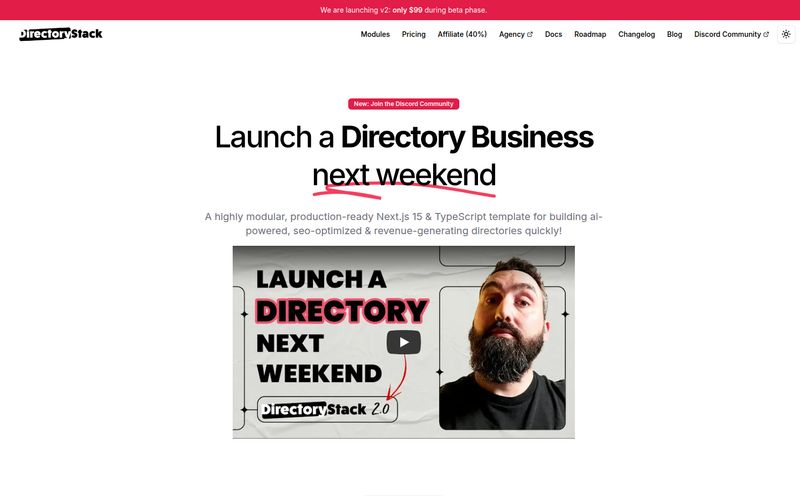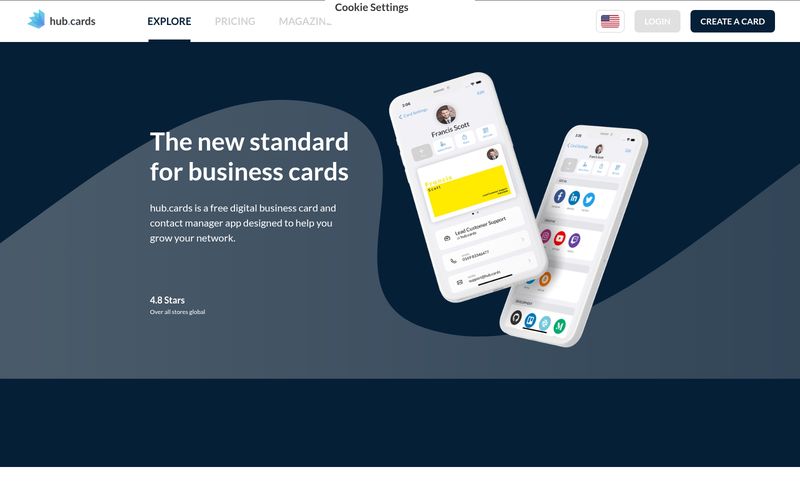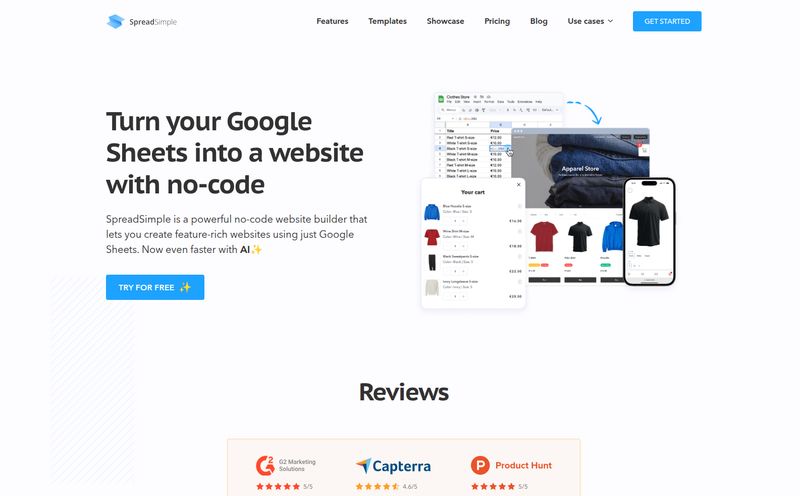I’ve been in the SEO and web traffic game for a long, long time. I remember when getting a site to look good on both Netscape Navigator and Internet Explorer was the pinnacle of web design. We've come a long way. Now, the new frontier, the new buzzword on everyone’s lips, is AI. AI for content, AI for images, and now, AI for the entire web design process.
So when I heard about Studio AI, a tool that claims to be an “AI-augmented design app,” my professional curiosity was piqued. But so was my skepticism. We’ve all seen tools that promise to revolutionize our workflow only to add another layer of complexity. Is Studio AI just another shiny object, or is it the real deal? I decided to roll up my sleeves and see for myself.
First Off, What Is Studio AI, Really?
Let's get one thing straight. This isn't just another drag-and-drop website builder like Wix or Squarespace, bless their hearts. Those are great for getting a simple site up, but they often feel like you’re painting by numbers. Studio AI is different. It positions itself as a design tool first, something that would feel more at home next to Figma or Sketch, but with a powerful AI engine humming under the hood.
The core idea is that the AI understands design principles. It watches what you’re doing, anticipates your needs, and helps you get from a blank canvas to a fully-realized, modern website. It’s less like a rigid template and more like having a hyper-efficient junior designer at your side—one that doesn’t need coffee and never complains about revisions. The ultimate promise? Taking your design and turning it into a live, functioning website. Instantly. That’s a bold claim.
The Features That Will Actually Affect Your Workflow
A feature list is just a list until you see how it works in practice. Here's my breakdown of what Studio AI brings to the table and what it means for your day-to-day grind.
From Blank Stares to Brilliant Starts with AI Suggestions
You know that feeling of staring at a blank artboard, waiting for inspiration to strike? Studio AI tries to short-circuit that process. As you start laying out elements, it offers design suggestions. We're not talking about clunky, pre-made blocks. It's more contextual. It might suggest better padding, a more balanced layout for a section, or color pairings. I found this to be surprisingly useful for breaking out of my own design ruts. Sometimes you just need a little nudge to see a different possibility, and the AI is pretty good at providing that nudge without being too bossy.
Your Personal Autopilot for Tedious Design Chores
This is where I started to get really interested. Think about all the mind-numbing, repetitive tasks in web design. Making sure every card in a grid is perfectly aligned. Ensuring consistent spacing. Turning a set of layers into a reusable component. Studio AI automates a lot of this. It's smart enough to see you’re creating a list of features and can help you style them consistently with a single click. This is a huge time-saver. It’s the kind of work that consumes hours but doesn't necessarily require creative genius. Handing that off to an AI feels like a genuine step forward.

Visit STUDIO AI
The Responsive Design Magic Trick
Ah, responsive design. The source of so much pain and so many late nights fueled by energy drinks and CSS frustration. This is probably Studio AI's crown jewel. The platform is built around responsive principles from the ground up. As you design for one screen size, the AI is already figuring out how it should adapt to others. It’s not always 100% perfect—sometimes you have to make manual tweaks—but it gets you about 90% of the way there. Going from a desktop design to a phone layout that doesn't look like a complete disaster, without writing a single media query? That feels a bit like black magic. For designers who dread the technical implementation of responsiveness, this feature alone could be worth the price of admission.
The Good, The Bad, and The AI
No tool is perfect, right? After spending some time with it, here's my honest breakdown of the pros and cons.
The speed is undeniable. Prototyping and building simple-to-moderately complex sites is just faster. What used to be a multi-day process of designing in one app, getting feedback, then handing it off to a developer (or coding it yourself) can now be condensed significantly. It's also a fantastic tool for designers who want to build what they design without needing to become full-stack developers. It bridges a very real gap in the market.
Now, for the reality check. Some designers, especially those of us who are… let's call it 'particular'… might feel a slight loss of control. When you let an AI make suggestions, you are ceding some of your pixel-perfect authority. You can always override it, but the path of least resistance is to work with the AI. If you're a designer who obsesses over every tiny detail and wants absolute, granular control, you might find yourself fighting the system a little. There's also a bit of a learning curve. You have to learn how to prompt the AI with your designs to get the best results. It's a new skill in itself.
And, of course, the most advanced features are locked behind a paywall. That's no surprise, but it's something to be aware of.
So, Who Is This Actually For?
I’ve been thinking about this a lot. Who gets the most out of Studio AI? In my opinion, it hits a sweet spot for a few key groups:
- Freelance Web Designers: Especially those who work with small to medium-sized businesses. It allows you to offer design and development services, turning out high-quality sites much faster.
- Agencies for Rapid Prototyping: Need to get a functional, good-looking prototype in front of a client ASAP? This is your tool.
- Designers Who Want to Build: If you're a talented UI/UX designer who has always been intimidated by the code side of things, Studio AI could be your bridge to bringing your own creations to life.
Who is it not for? Probably enterprise-level teams building incredibly complex web applications with bespoke backend requirements. Or, as I mentioned, the hardcore developer who wants to hand-craft every line of CSS and JavaScript. This tool is about smart, efficient web design, not intricate software engineering.
How Much Does Studio AI Cost?
They use a classic freemium model, which I always appreciate. You can start for free to get a feel for the platform, build a site, and see if its workflow clicks with you. This free tier is genuinely useful for learning the ropes.
To get the really good stuff, like connecting a custom domain (which is a must for any professional site) and unlocking the more advanced AI capabilities, you'll need to upgrade to a paid plan. I won't list the exact prices here because they can change, but you can check out their official pricing page for the latest details. The structure seems fair and in line with other pro-level design tools on the market.
My Final Takeaway
I came into this review expecting to be underwhelmed, but I’m walking away quietly impressed. Studio AI isn’t going to put talented web developers out of a job. What it is going to do is change the workflow. It's a powerful assistant that takes care of the grunt work, freeing up designers to focus on what humans do best: strategy, creativity, and solving user problems. It’s a smart tool for a new era of web design. It's not perfect, and it requires a new way of thinking, but the potential to build better sites faster is absolutly there. It’s definitely worth a look.
Frequently Asked Questions
Can I use my own custom domain with Studio AI?
Yes, absolutely. While you can publish on a free subdomain to test things out, connecting your own custom domain (like www.yourbusiness.com) is a core feature of their paid plans.
Do I need to know how to code to use Studio AI?
Nope, and that's one of its main attractions. It's a visual design tool that handles the code generation for you. However, having a strong understanding of web design principles (layout, hierarchy, spacing, etc.) is crucial to get good results.
Is a website built with Studio AI good for SEO?
From what I can tell, Studio AI generates clean, modern HTML and CSS that is standards-compliant. This provides a solid technical foundation for SEO. However, good SEO still depends on you. You'll need to write high-quality content, optimize your meta titles and descriptions, build backlinks, and manage all the other fun stuff that goes into ranking well.
How exactly does the AI 'learn' from my designs?
The AI uses machine learning models. As you work, it analyzes your choices—the fonts you pair, the spacing you use, the layouts you create. Over time, its suggestions become more tailored to your personal style. Think of it like a recommendation engine for design.
Can I export the code from my Studio AI site?
Studio AI is primarily an all-in-one platform for designing and hosting. Its main purpose is to take you from design to a live website seamlessly within its own ecosystem. The focus isn't on code export for use elsewhere, but rather on providing a complete, integrated solution.
Reference and Sources
- Studio AI Official Website
- Studio AI Official Pricing Page
- Smashing Magazine - A Look at AI Tools for Designers



